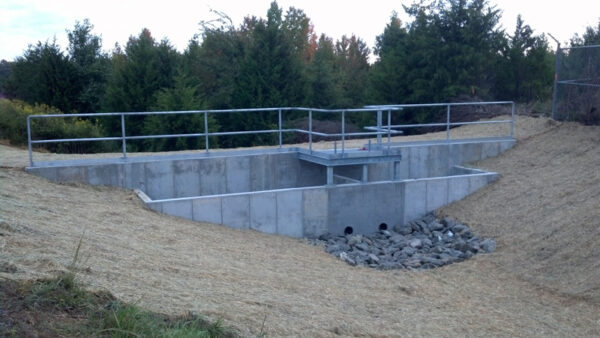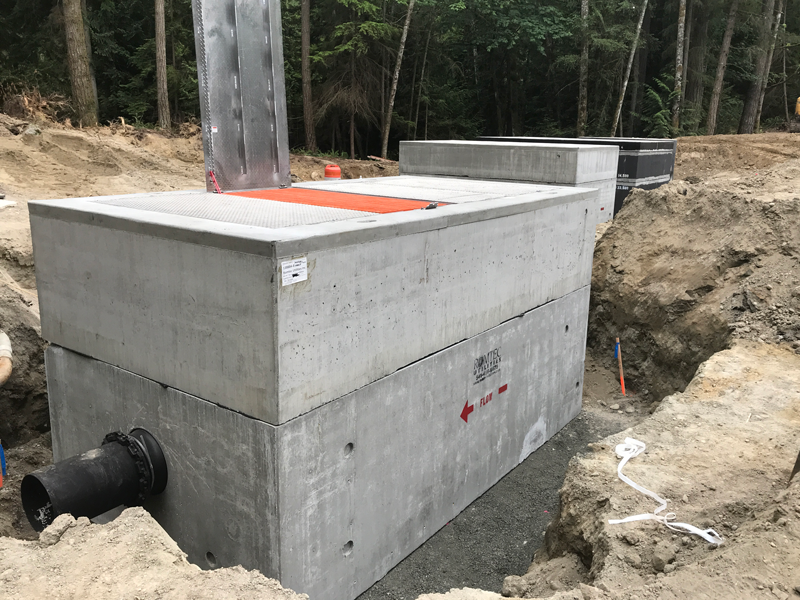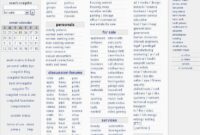Used Honda Pickup Trucks For Sale: Your Comprehensive Guide to a Smart Purchase pickup.truckstrend.com
In the vast landscape of pickup trucks, one name stands out for its unique approach to utility, comfort, and renowned reliability: the Honda Ridgeline. While not a traditional body-on-frame leviathan, the Ridgeline carves its own niche, offering a compelling blend of SUV-like refinement with practical truck capabilities. For those seeking a versatile, dependable, and often more fuel-efficient alternative to full-size pickups, a used Honda Ridgeline represents an incredibly smart purchase. This comprehensive guide will delve into everything you need to know about finding and buying a used Honda pickup truck, ensuring you make an informed decision that perfectly fits your lifestyle and needs.
The Honda Ridgeline: A Unique Contender in the Truck Market
Used Honda Pickup Trucks For Sale: Your Comprehensive Guide to a Smart Purchase
When we talk about "Used Honda Pickup Trucks For Sale," we are exclusively referring to the Honda Ridgeline. Unlike its competitors that typically employ a body-on-frame construction, the Ridgeline utilizes a unibody platform, sharing its underpinnings with Honda’s popular SUVs like the Pilot and Passport, and even the Odyssey minivan. This fundamental difference is key to understanding its appeal.
The unibody construction grants the Ridgeline a ride quality, handling, and interior comfort that is remarkably car-like, often surpassing traditional mid-size and even some full-size trucks. Powered by a robust V6 engine (historically a 3.5L VTEC), it offers ample power for everyday driving, towing, and hauling. Furthermore, the Ridgeline boasts innovative features that are uniquely Honda, such as its dual-action tailgate (which can swing open or fold down) and the weather-tight, lockable in-bed trunk, providing secure storage often lacking in other pickups. It’s a truck designed for the modern family and individual who needs truck utility without sacrificing daily drivability or comfort.
Why Choose a Used Honda Ridgeline?
Opting for a pre-owned Honda Ridgeline offers a plethora of advantages that make it a compelling choice in today’s used vehicle market:
- Legendary Honda Reliability: Honda’s reputation for building durable, long-lasting vehicles is well-deserved. The Ridgeline benefits from this engineering prowess, meaning a well-maintained used model can provide many years and miles of trouble-free service. This translates to lower long-term maintenance costs and greater peace of mind.
- Exceptional Value Retention: While Honda vehicles, including the Ridgeline, tend to hold their value well, buying used allows you to bypass the significant depreciation hit that new vehicles experience in their first few years. You get a highly capable and reliable truck at a more accessible price point.
- Superior Comfort and Ride Quality: Thanks to its unibody design and independent rear suspension, the Ridgeline offers a remarkably smooth and quiet ride. It handles more like an SUV than a truck, making it ideal for daily commutes, long road trips, and urban driving where traditional trucks can feel cumbersome.
- Practicality for Everyday Use: The Ridgeline strikes a perfect balance between truck utility and everyday usability. Its bed is large enough for most DIY projects, camping gear, and recreational equipment, while its comfortable cabin and safety features make it an excellent family vehicle. The in-bed trunk is a game-changer for securely storing tools, groceries, or sports equipment.
- Advanced Safety Features: Newer used Ridgeline models (especially 2017 onwards) often come equipped with Honda Sensing®, a suite of advanced safety and driver-assistive technologies. This includes features like Collision Mitigation Braking System, Road Departure Mitigation, Adaptive Cruise Control, and Lane Keeping Assist System, significantly enhancing safety and driving confidence.

Key Generations and What to Look For
The Honda Ridgeline has primarily seen two distinct generations, each with its own characteristics:

-
First Generation (2006-2014):
- Design: Known for its somewhat polarizing, angular, and distinctive styling, including the "flying buttress" C-pillar design.
- Powertrain: Exclusively featured a 3.5-liter V6 engine paired with a 5-speed automatic transmission and Honda’s VTM-4 (Variable Torque Management 4-wheel drive) system.
- Features: Pioneered the dual-action tailgate and in-bed trunk.
- Considerations: Generally very reliable. Check for routine maintenance, especially timing belt replacement (typically around 100,000 miles). Some owners report minor rust on the rear bumper hitch area in colder climates.

-
Second Generation (2017-Present): (No Ridgeline was produced for the 2015 and 2016 model years)
- Design: Adopted a more conventional, SUV-like appearance, aligning it more closely with the Honda Pilot. The "flying buttress" was removed.
- Powertrain: Continues with a 3.5-liter V6, but with improved power output and fuel efficiency. Initially paired with a 6-speed automatic, later models (2020+) received a 9-speed automatic transmission. All-wheel drive (AWD) is standard on most trims, with some later models offering a front-wheel-drive (FWD) option.
- Features: Retains the dual-action tailgate and in-bed trunk. Introduced modern infotainment systems, Apple CarPlay/Android Auto, and the Honda Sensing suite on higher trims (and later standard across all trims).
- Considerations: Excellent choice for modern features and improved fuel economy. Check for software updates for infotainment, and ensure all Honda Sensing features are operational if equipped.
Things to Check When Buying Any Used Ridgeline:
- Maintenance Records: A complete service history is invaluable. Look for regular oil changes, transmission fluid changes, and timely replacement of wear items.
- Rust: Inspect the undercarriage, wheel wells, and bed for any signs of significant rust, especially if the truck has lived in a salt-belt region.
- Tires and Brakes: Check tire tread depth and brake pad thickness. These are often immediate expenses after purchase.
- Test Drive: Pay attention to engine noise, transmission shifts (should be smooth, not harsh), steering feel, and suspension (no excessive bouncing or clunking). Test all lights, windows, and infotainment functions.
- Fluid Levels and Leaks: Check engine oil, transmission fluid, power steering fluid, and coolant for proper levels and color. Look for any visible leaks underneath the vehicle.
- Recalls: Check the VIN (Vehicle Identification Number) on the NHTSA website (nhtsa.gov) for any outstanding recalls.
Where to Find Used Honda Ridgelines
- Authorized Honda Dealerships: Often have Certified Pre-Owned (CPO) Ridgelines, which come with extended warranties, multi-point inspections, and roadside assistance. While typically more expensive, they offer greater peace of mind.
- Independent Used Car Dealerships: A wide variety of models and prices. Be diligent with your inspections and consider a pre-purchase inspection (PPI).
- Online Marketplaces: Websites like AutoTrader, Cars.com, CarGurus, and Kelley Blue Book (KBB.com) allow you to filter by make, model, year, price, and features, making it easy to compare options from various sellers.
- Private Sellers: Often offer the best prices as there’s no dealership overhead. However, the process requires more due diligence from the buyer, including arranging inspections and handling paperwork.
- Auctions: While possible, buying from auctions is generally recommended for experienced buyers due to the "as-is" nature of sales and limited inspection opportunities.
Financing and Insurance Considerations
- Financing: Explore options from banks, credit unions, and even the dealership itself. Get pre-approved for a loan to understand your budget and leverage it during negotiations. Used car loan rates can vary based on your credit score and the age of the vehicle.
- Insurance: Generally, mid-size trucks like the Ridgeline are less expensive to insure than full-size trucks due to lower repair costs and perceived lower risk. However, factors like your driving record, location, and chosen coverage levels will significantly impact your premiums. Get insurance quotes before finalizing your purchase.
Tips for a Smooth Purchase
- Set a Realistic Budget: Don’t just consider the purchase price. Factor in taxes, registration fees, insurance, potential immediate repairs (tires, brakes), and ongoing maintenance.
- Research Thoroughly: Understand the different trims, features, and common issues (if any) for the specific year range you’re interested in.
- Get a Pre-Purchase Inspection (PPI): This is perhaps the most critical step. Have an independent, trusted mechanic inspect the vehicle before you buy it. They can identify hidden problems that aren’t obvious to the untrained eye.
- Negotiate Confidently: Use market research (e.g., comparable listings on KBB or Edmunds) to support your offer. Don’t be afraid to walk away if the deal doesn’t feel right.
- Understand the Paperwork: Ensure the title is clear (no liens), verify the VIN on all documents matches the vehicle, and understand all sales agreements before signing.
Potential Challenges and Solutions
- Limited Towing/Hauling Capacity: Compared to body-on-frame trucks, the Ridgeline’s maximum towing (typically 5,000 lbs) and payload capacities are lower.
- Solution: Understand its limitations. If you frequently tow heavy trailers (over 5,000 lbs) or haul extremely heavy loads, a Ridgeline might not be your best fit. For lighter trailers (boats, ATVs, small campers) and everyday hauling, it excels.
- Less "Truck-like" Appearance for Some: Its unibody design and softer lines might not appeal to those who prefer the rugged, traditional look of a pickup.
- Solution: Embrace its unique design. The Ridgeline’s strengths lie in its refined driving dynamics and innovative features, not necessarily in its ability to look like a brute. Its comfort and practicality often outweigh aesthetic preferences for many buyers.
- Finding Specific Trims/Years: While popular, specific trims or older generations might be less common on the used market in certain areas.
- Solution: Be patient and utilize online search alerts. Expand your search radius if necessary. Consider traveling for the right vehicle.
Used Honda Ridgeline Price Table (Estimated Ranges)
Please note: Prices vary significantly based on mileage, condition, trim level, optional features, location, and market demand. These are general estimates for a well-maintained vehicle.
| Model Year Range | Generation | Estimated Price Range (USD) | Key Features/Notes |
|---|---|---|---|
| 2006-2009 | 1st Gen | $6,000 – $12,000 | Older models, higher mileage likely. Check for rust, timing belt service. |
| 2010-2014 | 1st Gen | $9,000 – $18,000 | Later 1st Gen models, potentially lower mileage. Still great value. |
| 2017-2019 | 2nd Gen (Early) | $20,000 – $30,000 | First few years of redesigned model. Often includes Honda Sensing on higher trims. |
| 2020-2021 | 2nd Gen (Mid) | $28,000 – $38,000 | Post-facelift models (2021+), 9-speed auto (2020+). Modern tech, better fuel economy. |
| 2022-Present | 2nd Gen (Late) | $35,000 – $45,000+ | Recent models, potentially CPO options. Closest to new car experience. |
Note: Add ~10-15% for AWD models if FWD was an option for that year. Deduct for high mileage, significant cosmetic flaws, or major mechanical issues.
Frequently Asked Questions (FAQ) about Used Honda Ridgeline Pickup Trucks
Q: Is the Honda Ridgeline a "real" truck?
A: This is a common debate. While it uses a unibody platform instead of traditional body-on-frame, it undeniably offers pickup truck utility with an open bed, towing capability, and hauling capacity. It’s best described as a highly versatile and comfortable mid-size pickup, rather than a heavy-duty work truck.
Q: What’s the best year for a used Ridgeline?
A: The "best" year depends on your priorities. For maximum value and proven reliability, a late first-generation (2010-2014) is excellent. For modern features, improved fuel economy, and a more refined ride, a second-generation (2017+) is preferable, with 2020+ models offering the 9-speed transmission and later facelifts.
Q: What is the towing capacity of a used Ridgeline?
A: Most Honda Ridgelines (both generations, with AWD) have a maximum towing capacity of 5,000 pounds. Some rare FWD models of the second generation have a lower capacity. Always check the specific vehicle’s manual or sticker for precise figures.
Q: How long do Honda Ridgelines last?
A: With proper maintenance, a Honda Ridgeline can easily last 200,000 to 250,000 miles or more. Many owners report well over 300,000 miles on their first-generation models. Honda’s V6 engines are known for their durability.
Q: Are parts expensive for a Ridgeline?
A: Generally, parts for the Honda Ridgeline are reasonably priced, comparable to other Honda SUVs like the Pilot. Its shared platform helps keep part costs down compared to some more specialized truck components.
Q: Does the Ridgeline have common problems?
A: Both generations of the Ridgeline are known for their reliability. First-generation models might require a timing belt service around 100,000 miles (a significant but routine maintenance item). Some owners have reported minor issues with infotainment systems in early second-generation models, but these are often resolved with software updates. Overall, major mechanical failures are rare.
Conclusion
For discerning buyers in search of a used pickup truck, the Honda Ridgeline presents a compelling and often overlooked option. It’s a vehicle that defies traditional truck stereotypes, offering a unique blend of Honda’s legendary reliability, SUV-like comfort, and genuine truck utility. Whether you need a practical vehicle for weekend adventures, a comfortable daily driver with occasional hauling needs, or simply a dependable family vehicle that can tackle light-duty tasks, a used Honda Ridgeline stands ready to deliver. By understanding its unique strengths, knowing what to look for, and following practical buying advice, you can confidently navigate the market and find a pre-owned Honda pickup truck that will serve you well for years to come.



